Ostracon
Ostracon: an inscribed potsherd.
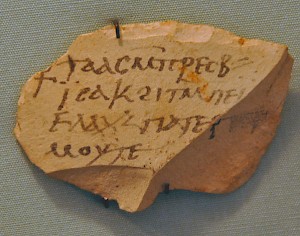
We are accustomed to write on paper. The ancients used papyrus or parchment, but also clay tablets, wax tablets, bones, and sherds of broken pots, which are called ostraca. Usually, the information documents every day life. For instance, among the Bu Njem Ostraca are reports about the tasks of soldiers at a fort on the southern frontier of the Roman Empire. Receipts, notes, and memos could also be written on ostraca, which were cheap and yet pretty strong - it is easy to break a pot, but completely destroying a sherd is difficult.
Occasionally, literary texts were written on ostraca and other cheap stuff: Diogenes Laertius tells us that Cleanthes recorded the philosophical opinions of his teacher Zeno "on oyster-shells and the blade-bones of oxen through lack of money to buy papers",note and one fragment of the poetry of Sappho has been transmitted to us on an ostracon. In Egypt, ostraca have been found with pictures.
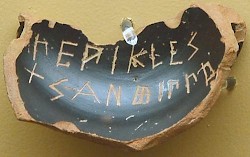
Ostraca are important because they help us understand daily life, but they also document the development of the ancient languages. Because they were written by ordinary people, we can find all kinds of writing errors that help us understand how the old languages were actually pronounced (the Bu Njem Ostraca record the disappearance of the /m/ at the end of Latin words in the third century).
From Athens, we have a great many ostraca that help us reconstruct political life: sometimes, the people felt that a politician was becoming too popular to operate within the democratic system. These politicians could be sent into exile by ostracism, a voting procedure in which the names were written on sherds.
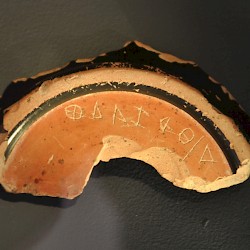 Thessaloniki, Sherd with a Carian inscription |
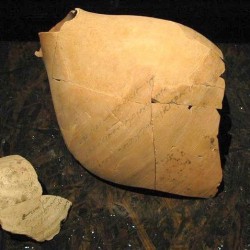 Ai Khanum, Treasury, Ostraca |
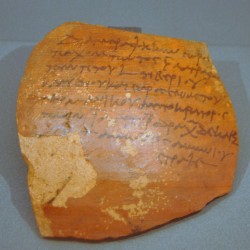 Elephantine, Ostracon recording a census |
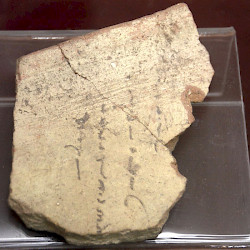 Hamadan, Sasanian ostracon about receiving a ration of food |